Some things I write, I know at least some people will be interested. At other times, I decide to write articles about Gimme Gimme Gimme and aspect ratios.
Still here? Amazing. Buckle up, here we go.
In yet another example of my excellent research, I don’t know what the first widescreen sitcom broadcast by the BBC was (or, hell, the first widescreen programme full stop – although I imagine the answer to that gets extremely murky and complicated). However, Sky Digital was officially launched on 1st October 1998; ONdigital was launched 15th November 1998. Gimme was first broadcast on 8th January 1999, so it was certainly one of the earliest BBC sitcoms produced in widescreen.
Of course, this doesn’t mean the majority of viewers saw it like this. Most people would still have been viewing the series on analogue at that point; there, it would have been broadcast in good old 14:9, cutting off the sides of the picture. But come DVD, everyone will be able to see how the programme was originally shot, yes?
Sadly not. Series 2 and 3 are correctly in 16:9 widescreen – but the Series 1 DVD is, alas, in 14:9. Even worse, that DVD was released in 2001, where there might have been some (small) excuse – but the Playback re-release boxset in 2006 is exactly the same.
Indeed, I was beginning to suspect that the entire series was shot in 16:9, and then edited in 14:9… until I caught recent G.O.L.D. showings. (Yes, I know the station is now called GOLD. I’ll change my spelling when they change their logo.) Here, have a look – firstly, at some of the worst sitcom opening titles ever broadcast. The first picture is from the G.O.L.D. broadcast and the second is from the DVD. How much picture is missing each side is clearly visible, especially when you look at the placement of Linda’s head on the right:
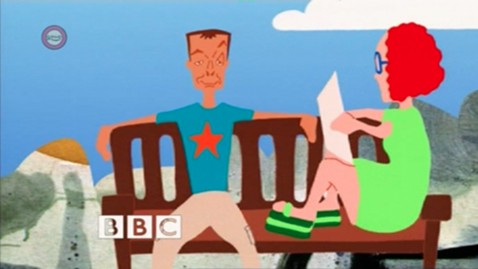
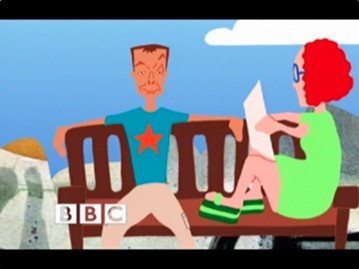
Next, one of the most unpleasant places in the universe – Linda’s bedroom. Again, G.O.L.D. showing first, then the DVD:
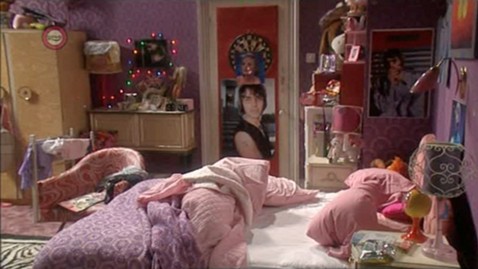
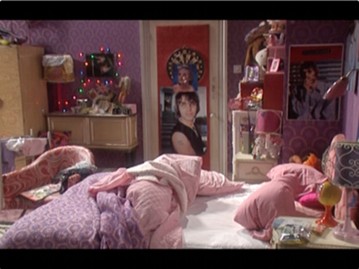
That’s probably enough, but I can’t let this article pass without a glimpse of our heroes:
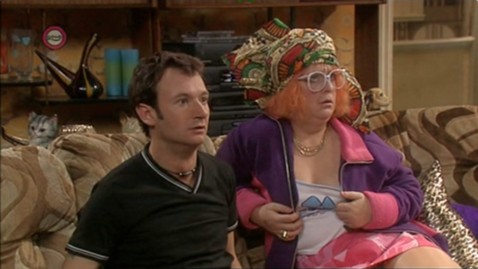
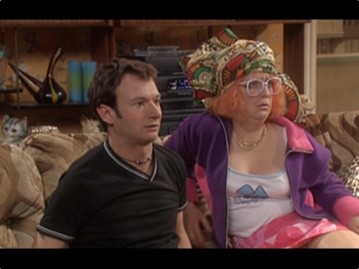
It has to be admitted that the last image especially also shows that you aren’t missing any important information out of frame. This is as much about wanting to watch the series as full resolution on a widescreen telly as much as anything.
The question remains, though: if 16:9 masters exist, why was the DVD release in 14:9? I’m afraid I smell releasing whatever is on the nearest shelf. Kudos to G.O.L.D. for digging around for the correct material – and it’s a shame the DVD producers didn’t take as much care to ensure the correct material was released.
As an addendum, the fact the show is one of the early widescreen shows the BBC made is in evidence from the end caption – a 4:3 image, stretched to 16:9…
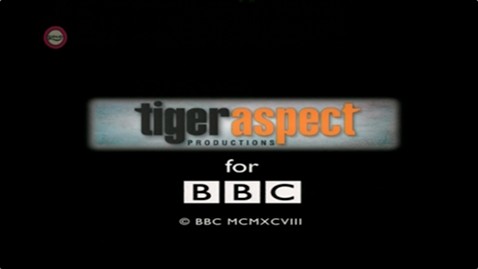
…and a badly-distorted BBC logo. Brilliant.
Although let’s not get too sneery at that one. Not when Doctor Who Confidential, broadcast last year, included some stretched 4:3 clips of old Who…

One comment
Ben Paddon on 13 November 2010 @ 5pm
Universal/Playback have a history of this sort of thing. The first series of Charlie Higson’s “Randall & Hopkirk (Deceased)” remake is presented in 4:3 on the DVDs, but it was shot in widescreen. It’s annoying becaudse you can tell that many of the shots were originally framed for 4:3, so there’s actually stuff missing off the edges. Irritating. Playback’s 2006 re-release of both series of the show makes the same error as it uses the original DVD masters rather than bothering to cobble together new ones. The Series 2 DVDs are presented in widescreen in both the original release and the boxset re-release.
I’m probably one of three people in the entire universe who really, REALLY wants to see a widescreen release of series 1. Unfortunately I don’t think Higson’s remake was popular or successful enough for anyone with the power to make this sort of thing happen to… well, to make this sort of thing happen.
Comments on this post are now closed.